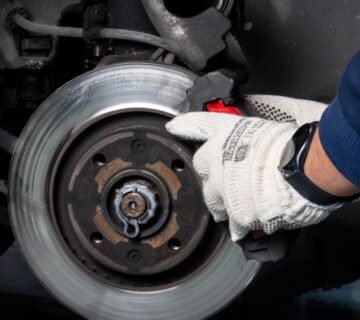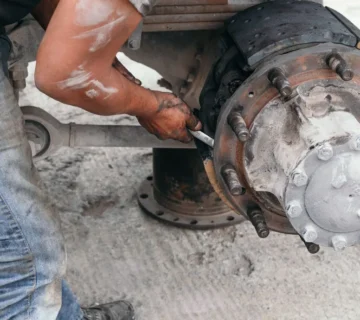The Brake Master Cylinder is the unsung hero of your vehicle’s braking system. It’s the component that ensures your car stops when you press the brake pedal, making it one of the most critical parts for your safety on the road. Despite its importance, many drivers are unaware of how it works, how to maintain it, or what to do when it fails.
In this in-depth guide, we’ll explore everything you need to know about the Brake Master Cylinder. From its function and types to maintenance tips, troubleshooting, and replacement, this article will provide you with a comprehensive understanding of this essential component. Whether you’re a car enthusiast, a DIY mechanic, or simply a responsible driver, this guide will equip you with the knowledge to keep your braking system in top condition.
What is a Brake Master Cylinder?
The Brake Master Cylinder is the central component of your vehicle’s hydraulic braking system. It converts the mechanical force you apply to the brake pedal into hydraulic pressure, which is then transmitted through the brake lines to the wheel cylinders or calipers. This pressure forces the brake pads or shoes against the rotors or drums, slowing down or stopping the vehicle.
Without a functioning master cylinder, your brakes would fail, making it impossible to stop your car safely. This is why understanding its role and ensuring its proper maintenance is crucial.
Key Components of a Brake Master Cylinder
To fully grasp how the Brake Master Cylinder works, it’s important to understand its key components:
- Reservoir: This is where brake fluid is stored. It supplies the cylinder with the fluid needed to create hydraulic pressure.
- Piston: The piston moves inside the cylinder when you press the brake pedal, compressing the brake fluid and generating pressure.
- Seals: These prevent brake fluid from leaking and ensure that pressure is maintained within the system.
- Springs: After you release the brake pedal, the springs return the piston to its original position, releasing the pressure and disengaging the brakes.
Types of Brake Master Cylinders
There are two main types of Brake Master Cylinders, each with its own advantages and disadvantages:
1. Single-Piston Master Cylinder
- Design: Uses a single piston to generate hydraulic pressure.
- Applications: Commonly found in older vehicles.
- Pros: Simpler design and easier to manufacture.
- Cons: Less efficient and less safe. If the single circuit fails, the entire braking system is compromised.
2. Dual-Piston Master Cylinder
- Design: Features two pistons and separate hydraulic circuits for the front and rear brakes.
- Applications: Standard in modern vehicles.
- Pros: Enhanced safety. If one circuit fails, the other can still provide braking power.
- Cons: More complex design and slightly more expensive.
How Does a Brake Master Cylinder Work?
Understanding the working mechanism of the Brake Master Cylinder is essential for diagnosing issues and performing maintenance. Here’s a step-by-step breakdown of how it operates:
- Brake Pedal Application: When you press the brake pedal, the pushrod connected to the pedal moves the piston inside the master cylinder.
- Hydraulic Pressure Generation: The movement of the piston compresses the brake fluid, creating hydraulic pressure.
- Pressure Transmission: The pressurized fluid travels through the brake lines to the wheel cylinders or calipers.
- Brake Activation: The pressure forces the brake pads or shoes against the rotors or drums, slowing down or stopping the vehicle.
- Pressure Release: When you release the brake pedal, the springs inside the master cylinder return the piston to its original position, releasing the pressure and disengaging the brakes.
Signs of a Failing Brake Master Cylinder
A malfunctioning Brake Master Cylinder can compromise your vehicle’s braking performance and safety. Here are the most common signs of failure:
- Spongy Brake Pedal: If the brake pedal feels soft or sinks to the floor, it could indicate air in the system or a leak.
- Brake Fluid Leaks: Visible fluid around the master cylinder or under the vehicle is a clear warning sign.
- Contaminated Brake Fluid: Dirty or discolored fluid can damage the cylinder and other components.
- Warning Lights: The brake warning light on your dashboard may illuminate if there’s an issue.
- Uneven Braking: If the vehicle pulls to one side when braking, the master cylinder may be failing.
- Reduced Braking Power: If your car takes longer to stop, it could be due to a failing master cylinder.
Maintenance Tips for Your Brake Master Cylinder
Proper maintenance is key to ensuring the longevity and performance of your Brake Master Cylinder. Here are some essential tips:
1. Check Brake Fluid Regularly
- Inspect the brake fluid level and quality every month.
- Top it up if necessary and replace it as recommended by your vehicle’s manufacturer.
2. Inspect for Leaks
- Regularly check for leaks around the master cylinder and brake lines.
- Address any leaks immediately to prevent further damage.
3. Bleed the Brake System
- Air in the brake lines can reduce braking efficiency.
- Bleed the system to remove air bubbles and ensure optimal performance.
4. Replace Worn Components
- Seals and other components can wear out over time.
- Replace them promptly to prevent failure.
5. Use High-Quality Brake Fluid
- Always use the type of brake fluid specified in your owner’s manual.
- Avoid mixing different types of brake fluid, as this can cause damage.
Troubleshooting Common Issues
If you suspect a problem with your Brake Master Cylinder, follow these troubleshooting steps:
1. Check Brake Fluid Level
- Low fluid levels can indicate a leak or worn brake pads.
- Top up the fluid and inspect for leaks.
2. Inspect for Leaks
- Look for fluid around the master cylinder, brake lines, and wheels.
- Address any leaks immediately.
3. Test Brake Pedal Feel
- A spongy or hard pedal can signal air in the system or a failing master cylinder.
- Bleed the brakes to remove air or replace the master cylinder if necessary.
4. Examine Brake Fluid Quality
- Contaminated fluid should be flushed and replaced.
- Use a high-quality brake fluid recommended by your vehicle’s manufacturer.
5. Consult a Professional
- If you’re unable to diagnose or fix the issue, seek help from a qualified mechanic.
- Don’t take risks with your braking system – safety should always come first.
Replacing a Brake Master Cylinder
If your Brake Master Cylinder is beyond repair, replacement is the only option. Here’s a detailed step-by-step guide to help you through the process:
Tools and Materials Needed
- New master cylinder
- Brake fluid
- Wrenches
- Bleeder kit
- Clean rags
- Jack and jack stands
Step 1: Prepare Your Vehicle
- Park your car on a flat surface and engage the parking brake.
- Lift the vehicle using a jack and secure it with jack stands.
Step 2: Remove the Old Master Cylinder
- Disconnect the brake lines from the master cylinder.
- Unbolt the old master cylinder from the brake booster.
Step 3: Install the New Master Cylinder
- Position the new master cylinder and bolt it to the brake booster.
- Reconnect the brake lines.
Step 4: Bleed the Brake System
- Fill the reservoir with brake fluid.
- Use a bleeder kit to remove air from the system.
Step 5: Test the Brakes
- Start the vehicle and test the brakes to ensure they’re functioning properly.
- Take a short test drive to confirm everything is working as it should.
Conclusion
The Brake Master Cylinder is a vital component of your vehicle’s braking system, and understanding its function, maintenance, and troubleshooting can help you stay safe on the road. Regular inspections, proper maintenance, and timely repairs are essential to ensure optimal performance.
By following the tips and guidelines outlined in this guide, you can keep your Brake Master Cylinder in top condition and enjoy a smooth, safe driving experience. Remember, when it comes to brakes, safety should always be your top priority.



